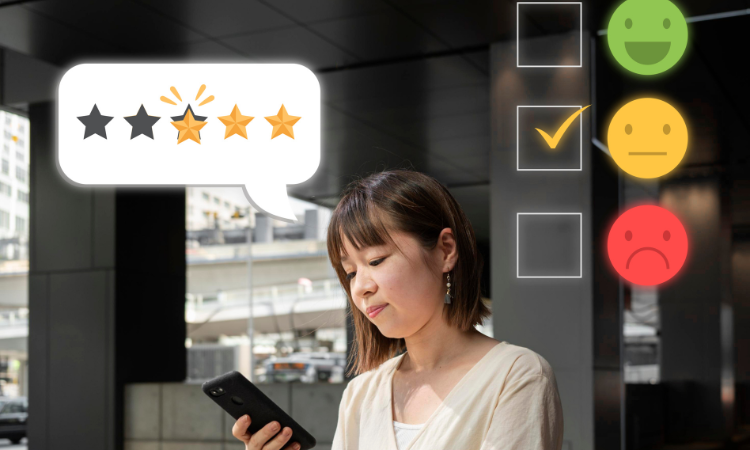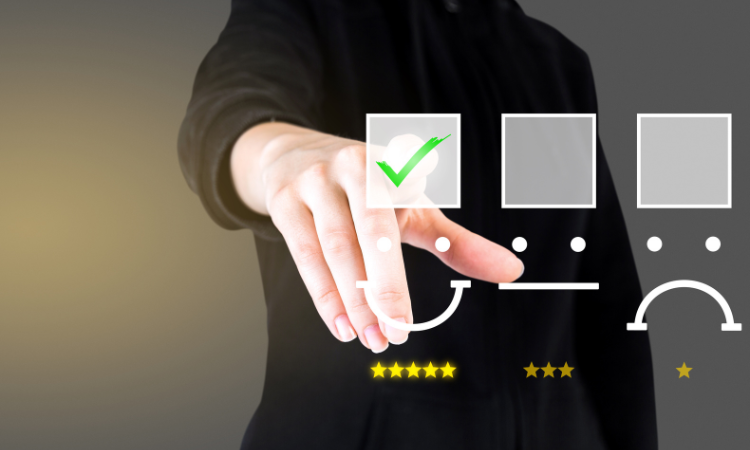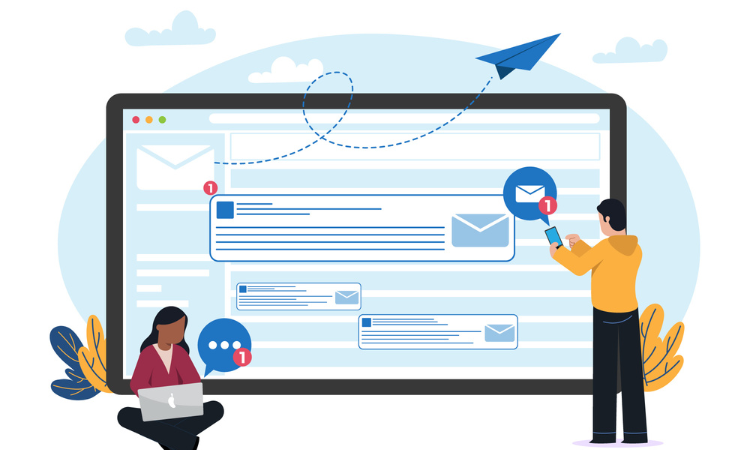Turning passives into promoters is a subtle yet powerful strategy for enterprise growth. Imagine this: a major software company celebrates a seemingly healthy NPS score. But beneath the surface lurks a hidden threat – a silent exodus of passive customers (NPS scores 7 or 8). These seemingly neutral individuals aren't actively complaining, but they're also not raving fans.
Here's the shocker: According to CallMiner Churn Index 2020, US companies lose $136.8 billion per year due to avoidable consumer switching. And guess who's more likely to jump ship than even the Detractors? You guessed it – the Passives!
Let's translate this national statistic into a potential impact on your business.
If your company has 1 million customers and a churn rate of just 5%. That translates to 50,000 lost customers annually. Out of this, even if the Passive population is 20% and each customer segment generates $1,000 annually, the potential revenue loss due to Passive churn would be $10 million annually.
That's a multi-million-dollar leak on your revenue stream, simply because you weren't attuned to the quiet disengagement of your Passive customers!
The good news? Targeted NPS campaigns can stem this tide. By leveraging valuable Passive feedback, you can identify areas for improvement and transform indifference into loyalty. This translates to not just retained customers, but also vocal brand advocates, driving new business and propelling growth.
In this article, we’ll discuss actionable strategies and real-world examples to help your enterprise convert passive customers into passionate promoters. We'll delve into the techniques that can turn neutrality into advocacy and drive substantial growth for your business.
TL;DR
-
NPS Passives are customers who rate their willingness to recommend your company as 7-8 out of 10. They neither actively promote your brand nor spread negative sentiments.
-
Confusing features, diverse needs, weak emotional connections with your brand, service interruptions, and generic communication can all lead to customer passivity.
-
By implementing a smart NPS system, creating a unified data ecosystem, employing AI, performing funnel analysis, and establishing an automated personalized communication system, you can turn your NPS passives into promoters.
-
Zonka Feedback is an NPS survey tool that can help you create, distribute, and analyze powerful NPS surveys with multichannel options, advanced segmentation, and AI-powered sentiment analysis. It empowers you to close the feedback loop with automated responses and actionable insights. Sign up with a free trial or schedule a demo to turn Passives into loyal advocates today!
Measure Customer Loyalty with NPS ❤️
Use NPS surveys to identify Passives, reduce churn with AI insights and close the feedback loop with Zonka Feedback.

What are NPS Passives?
You must have noticed an airport terminal where some people whiz by, some excitedly rush towards their dream vacation, and others, visibly frustrated with a delayed flight. But in the corner sits a group quietly sipping coffee – neither thrilled nor upset, just...there. These are the Passive customers in the world of NPS, a silent majority that holds the key to explosive enterprise growth.
Passive customers are those who rate their willingness to recommend your company as 7-8 out of 10. They are moderate in their recommending behavior—they neither actively promote your brand nor spread negative sentiments about it. This group is especially important for your enterprises because they represent both a risk and an opportunity.
Why do Passives Matter?
Passives are the missing piece of the NPS puzzle for business organizations. They aren't unhappy customers, they are satisfied but unenthusiastic customers. Here's why they matter in the big picture for your enterprise growth:
-
Net Promoter Score (NPS) Formula: The traditional NPS formula calculates a score by subtracting the percentage of Detractors from the percentage of Promoters (scores 9 or 10). However, it completely overlooks the vast middle ground of Passives. This can create a false sense of security for enterprises, masking the underlying churn risk.
-
The Risk of Churn: Passives are particularly susceptible to churn because their loyalty to your brand is weak. When offered a slightly better deal or a more engaging experience by competitors, passives are quick to switch. This silent exit can significantly impact your business revenue.
-
Cost of Acquiring New Customers: Studies show acquiring new customers is 5 to 25 times more expensive than retaining existing ones. By focusing on converting NPS Passives into Promoters, you can unlock significant cost savings and boost profitability.
-
Relatively Easy to Convert into Promoters: While following up with Detractors is essential, it is not guaranteed that you will win them back. The effort and resources required to convert detractors can be substantial, and success is not always assured. In contrast, engaging passives, who are already moderately satisfied, can yield higher returns with comparatively less effort.
Understanding Passive Customer Psychology
If you look at the customer journey as a climb up Maslow's Hierarchy of Needs, Promoters have reached the pinnacle – self-actualization – where they feel a deep connection to the brand and its values. Detractors, on the other hand, are struggling to meet basic needs, frustrated, and likely to jump ship.
Passives? They're stuck in the comfort zone of "Safety." They're using your product or service and it fulfills their basic needs. They might even like it! But they lack the emotional connection or sense of belonging that propels them to become Promoters.
So, how do we understand why Passives behave this way? Let's look at the key drivers of passive behavior and how they can be handled.
Key Drivers of Passive NPS Behavior & Their Solutions
Before you create targeted strategies to unlock the true potential of NPS Passives, you need to understand what drives their neutral stance within the NPS system. Here are some core reasons (along with effective solutions) that can help you eliminate them.
1. Complexity Overload
A study by Bain & Company found that 75% of B2B customers struggle to understand the full value proposition offered by complex organizations. If you offer a vast array of products and services, it might be difficult for customers to navigate and fully grasp the value proposition.
Example: Imagine a global financial institution like UBS with a complex suite of investment options, banking plans, and wealth management services. Navigating this complexity can be overwhelming for customers, leading them to settle for basic functionalities (checking accounts, basic investment options) and becoming NPS Passives due to a disconnect with the full value proposition (advanced portfolio management tools).
Solution: Simplify and streamline communication channels to help customers understand the full range of offerings. Do this by:
-
Creating easy-to-understand guides and offering personalized consultations.
-
Developing an interactive online portal where customers can explore and learn about different services tailored to their needs.
-
Providing webinars and one-on-one consultations to demystify complex products.
2. Diverse Customer Base
Enterprise clientele come in all shapes and sizes. A software company like Microsoft might cater to both small businesses and multinational corporations, each with vastly different needs. Tailoring experiences and support structures to resonate with every customer segment becomes a challenge. Passivity can arise when specific needs aren't fully met, leaving customers feeling like a square peg in a round hole.
Example: Companies like Microsoft cater to both small businesses and multinational corporations. A small business using Microsoft products for basic email and document management might be Passive due to a lack of support or training resources specifically designed for their needs compared to the complex enterprise-level offerings.
Solution: Ensure that small businesses receive prompt and targeted assistance that addresses their specific use cases, rather than getting lost in a maze of complex enterprise-focused resources. You can do this by:
-
Segmenting your customer base by size, industry, and usage patterns and tailoring support structures and experiences to each segment.
-
Implementing segment-specific support teams and resources.
-
Providing small businesses with dedicated account managers who understand their unique needs.
3. Maintaining Transactional Relationship
Many NPS Passives exhibit a transactional mindset. They interact with your enterprise solely to fulfill a specific need, with little to no emotional connection or sense of loyalty. While Passives are unlikely to damage your brand through negative word of mouth, they're vulnerable to competitive offerings.
The probing question in such a scenario becomes how can you facilitate a deeper connection with your customers and build a sense of community that goes beyond just fulfilling their basic needs?
Example: Think of a large cloud storage provider like Amazon Web Services (AWS). A customer using their service solely for basic file storage might be Passive, lacking the deeper brand engagement that encourages Promoters.
Solution: Move beyond generic communication and build a multi-tiered engagement ecosystem that caters to different customer needs and motivations. Here's how:
-
By creating customer communities, both online and offline, where customers can connect, share best practices, and learn from each other.
-
Hosting exclusive webinars led by industry experts or product specialists, catering to the specific needs of each segment.
-
Providing networking opportunities through events or online forums, facilitating a sense of belonging and community around your brand.
4. The Data Deluge
Large enterprises generate vast amounts of customer data. Extracting the subtle signals of passivity from this data deluge requires sophisticated analytics tools and a keen eye to pinpoint these hidden customers within the vast enterprise landscape.
Example: Imagine sifting through endless spreadsheets and reports from AWS to find a pattern – a customer consistently using only basic storage options but never exploring their advanced analytics services.
Solution: Leverage advanced customer segmentation techniques to identify Passives based on usage patterns and combine that data with NPS scores to pinpoint precisely where to focus your efforts.
5. The One-Size-Fits-All Fallacy
Generic communication strategies fail to resonate with Passives. A mass email blast promoting a new feature might leave them feeling uninvested. Engaging NPS Passives requires personalized outreach that understands their specific needs and tailors communication accordingly.
Example: Imagine a software company sending a generic email to all customers about a new project management feature. A small business using only basic functionalities might get confused by the email's focus on advanced features they don't need.
Solution: Personalize communication based on customer segments and usage patterns. Tailor outreach to highlight features and benefits relevant to their specific needs.
6. Service Interruptions
According to a Zendesk report, 42% of customers will defect after just one negative customer service experience. Any disruptions in the service process, like delayed responses, unresolved issues, or difficulty accessing support, can contribute to passivity. These frustrations can prevent a customer from reaching the "Esteem" level of Maslow's hierarchy within their brand relationship, leading to a neutral NPS score.
Example: A global logistics company experiences frequent delays in parcel deliveries, leading to customer frustration. Despite having a robust system, occasional lapses in service quality lead to increased passivity among customers who otherwise might be promoters.
Solution: Ensure consistent quality and communicate effectively during service interruptions. Make sure to:
-
Implement robust contingency plans and improve communication channels during disruptions.
-
Train staff to handle issues promptly and effectively.
7. The Inertia Trap
Large organizations can struggle with agility. Introducing new features or streamlining processes can be a slow and bureaucratic endeavor. This inertia can leave customers feeling stuck with a "good enough" solution, preventing them from becoming enthusiastic customers like Promoters.
Example: Consider a large enterprise software company like SAP. They might be slow to roll out new features or fix bugs due to internal hurdles. This can leave customers frustrated and resigned to a "good enough" experience, hindering their journey to becoming Promoters.
Solution: Streamline processes and prioritize customer feedback to overcome inertia.
-
Create agile teams dedicated to rapid response and continuous improvement based on customer feedback.
-
Implement a fast-track process for critical updates and features.
Actionable Strategies: Turning Passives to Promoters
Let us look at some actionable strategies that you can implement to turn your Passives into loyal customers and promoters of your brands.
a. Implement a Smart NPS System
A smart Net Promoter Score system utilizes advanced technologies such as artificial intelligence (AI), machine learning (ML), and automation for collecting and measuring customer loyalty more effectively. This system goes beyond traditional NPS surveys by providing deeper insights, predictive analytics, and personalized customer engagement strategies.
Here's what can you help you create an effective NPS program for your business so that you can collect feedback and act on them to close the feedback loop.
1. Predictive Analytics for Proactive Engagement
Predictive analytics involves using historical data and machine learning algorithms to forecast future customer behaviors and trends. By using predictive analytics, you can create:
-
Churn Prediction Models: Develop models that analyze customer interaction history, feedback scores, and service usage patterns to predict customer churn probability. You can then deploy a dedicated team to engage with high-risk customers identified by these models.
-
Proactive Outreach Campaigns: By creating automated outreach campaigns that trigger personalized emails or calls to at-risk customers, you can offer solutions to their specific issues based on predictive insights.
2. Dynamic and Adaptive NPS Surveys
To truly understand what is the cause of passivity among your customers, you should utilize NPS tools that offer dynamic surveys. It means that your NPS surveys adapt in real-time based on the respondent’s previous answers, ensuring the NPS survey questions remain relevant and engaging throughout the survey process.
You can implement survey paths that change based on customer segments, feedback history, or interaction patterns. For instance, frequent buyers or repeat purchases might receive different follow-up questions compared to one-time purchasers.
3. Automated Feedback Loop and Follow-Up
Automation in the feedback loop involves using technology to automatically categorize, prioritize, and follow up on customer feedback without manual intervention. This means that you have to ensure that every feedback is addressed promptly while utilizing resources in an optimized manner.
To ease the process of automation, you must utilize:
-
Feedback Management Platforms: Deploy platforms that automatically categorize feedback based on urgency and topic, assigning them to the appropriate teams for follow-up.
-
Automated Personalized Responses: Use AI to generate personalized responses for common feedback themes, ensuring that customers feel heard and valued even in automated interactions.
4. Continuous Improvement through AI and ML
AI and ML models can analyze vast amounts of feedback data to detect patterns, identify emerging trends, and uncover potential issues before they become widespread. By identifying potential problems early, you can address them proactively, preventing passives from becoming detractors.
For example, if your NPS reveals a rise in passive responses, indicating customer satisfaction isn't deteriorating but not actively growing either. Then your AI would analyze open-ended feedback and identify mentions of "limited value" or "underutilized features." After this, the ML models show Passives rarely use advanced features. Based on this, the system triggers personalized in-app tutorials showcasing the benefits of these features, potentially turning Passives into engaged Promoters.
Here's what more you can do using AI and ML models:
-
Dynamic Customer Profiles: AI continuously updates customer profiles based on new data, keeping personalization efforts relevant. Imagine a customer using a new feature – AI updates their profile to suggest relevant tutorials and ensure they get the most out of the product.
-
Utilize ML with Product Feedback Data: Use ML models to correlate feedback with product usage data, identifying specific features or aspects that need enhancement. Regularly update and improve products based on these insights.
-
Intelligently Engage with Passives: ML personalizes engagement plans for different customer segments. Passives might receive targeted email campaigns with helpful content or exclusive offers relevant to their usage patterns.
-
Automated Insights & Actions: AI generates reports with data-driven recommendations for improving customer experience. This empowers teams to identify trends, prioritize actions, and stay proactive. Imagine a report highlighting a feature causing churn among a specific segment – the system prioritizes fixing that feature to prevent further losses.
-
Behavioral Triggers & Scenario Modeling: AI can trigger prompts based on real-time behavior. For example, a passive customer abandoning their cart might receive a personalized discount offer to encourage completion. ML models various engagement scenarios and adapts strategies based on their success, ensuring continuous improvement in customer interactions.
b. Create a Unified Data Ecosystem
If you have large customer data sets, you might often struggle with fragmented customer data scattered across different systems. This hinders understanding customer needs and cultivating customer loyalty. A unified data ecosystem bridges this gap.
Imagine a single platform integrating data from surveys, social media, support tickets, sales interactions, and CRM systems. This holistic view empowers you to truly understand your customers. You can create detailed customer profiles, personalize communications, and proactively address issues.
By tailoring marketing campaigns, offering targeted support, and resolving problems before they escalate, you transform passive customers into engaged promoters.
c. Develop Omni-Channel Communication Strategies
One of the major reasons why a chunk of your customer segment is Passive because you are unable to engage them. An omni-channel communication strategy can be your solution to meeting them wherever they are. Passives might engage through email, SMS, or the company website. A unified approach ensures consistent messaging and support across all channels.

By implementing an omnichannel communication strategy, you can:
-
Personalized Outreach: Leverage data to tailor messages and offers to individual customer needs and usage patterns. This demonstrates attentiveness and can reignite interest in underutilized features or services.
-
Seamless Transitions: Facilitate smooth handoffs between communication channels. For instance, a customer starting a conversation on social media can seamlessly transition to live chat support for real-time assistance.
-
Contextual Relevancy: Deliver targeted information in the right context. Imagine a user struggling with a specific feature – an in-app notification offering a relevant tutorial can provide immediate guidance.
For instance, a customer uses your SaaS writing platform to write a blog and sticks to mostly basic features. But the mutli-channel nudge can trigger in-app notifications highlighting collaboration tools and SEO features relevant to customer's writing habits. You can also launch a targeted email series on "Unlocking Collaboration for Bloggers," piquing your customer's interest. The intrigue definitely would lead your customer to explore these features, potentially becoming a promoter by recommending your tool to other bloggers.
d. Employ Natural Language Processing for Open-Ended Responses
Natural Language Processing (NLP) enables the automated analysis of open-ended survey responses, extracting actionable insights from customer feedback that goes beyond simple numerical scores. You can regularly update and refine products and services based on insights derived from ongoing NLP analysis.
For instance, let's say you run a large telecommunications company and you are collecting NPS feedback. By employing NLP, you can effectively analyze the qualitative data from the follow-up NPS survey responses that state the reason for the Net Promoter Score. You can use NLP to cluster open-ended responses into themes such as "network issues," "customer service," and "pricing concerns."
-
Identify Recurring Issues: Through NLP, you can quickly identify the most frequent complaints and prioritize addressing them. For example, if many customers mention network outages, you can focus on improving network reliability and communicate these improvements to customers.
-
Turn Insights into Action: Through sentiment analysis, you can categorize responses as positive, negative, or neutral and reach out to customers who left negative feedback with personalized solutions or compensation. If a customer expresses frustration with a billing error, you can offer a discount or a one-on-one support session to resolve the issue, turning a negative experience into a positive one.
-
Proactive Communication: You can automatically generate personalized follow-up emails or calls based on the specific issues identified in the feedback. For example, if a customer mentions poor customer service, a follow-up email could detail the steps being taken to improve service quality and invite the customer to a dedicated support hotline.
e. Implement Behavioral Segmentation for Tailored Support
Behavioral segmentation involves dividing customers into groups based on their behaviors, preferences, and interactions with the company. This can help you understand passives on a deeper level and provide highly targeted and personalized support. By using behavioral segmentation, you can:
-
Go Beyond Demographics: Move beyond basic demographics. Segment passives based on usage patterns (e.g., infrequent users, limited feature exploration).
-
Tailored Support: Offer targeted support based on segment. For infrequent users, provide in-app tutorials or easy-to-access FAQs. For those neglecting advanced features, offer personalized recommendations or dedicated support channels.
-
Proactive Engagement: Anticipate needs before they become issues. If a segment rarely explores a specific feature, trigger contextual help messages or offer pre-emptive training materials.
-
Personalized Communication: Develop targeted communication for each segment. Highlight features relevant to their usage patterns, showcasing the value proposition and encouraging them to explore more of the product/service.
f. Visualize the Entire Customer Journey & Perform Funnel Analysis
Visualizing the entire customer journey allows you to map out each touchpoint and interaction a customer has with the brand. This detailed view helps in funnel analysis by which identifying drop-off points, pain points, and opportunities for improvement. Here's how:
-
Map the Stages: The first step is visualizing the entire customer journey map. Identify key touchpoints, from initial brand awareness (e.g., seeing an ad) to post-purchase interactions (e.g., using customer support). This creates a detailed map of their experience.
-
Leverage Data: Gather data from various sources like website analytics, CRM systems, and customer surveys. This paints a comprehensive picture of customer behavior at each stage.
-
Identify Drop-Off Points: Analyze the data to pinpoint stages with significant drop-offs. These are areas where customers disengage, potentially becoming passive.
-
Locate Passive Behavior: Funnel analysis goes beyond just drop-offs. It helps you identify the "passive zone" where customers who haven't necessarily abandoned the journey entirely but haven't progressed towards a conversion (purchase, subscription, etc.). They might be browsing your website but not buying, or using a free tier without exploring premium features.
-
Understand the "Why": Combine quantitative data from funnel analysis with qualitative insights from open-ended feedback surveys or support interactions. This helps understand the reasons behind customer drop-off at specific points in the customer journey. This can reveal reasons for passivity such as confusing interfaces, cumbersome checkout processes, or lack of readily available support, etc.
-
Optimize for Improvement: Based on your findings, prioritize improvements to address friction points and enhance the overall experience and customer loyalty in the long run. This could involve simplifying the onboarding process, improving product tutorials, or offering more personalized support so that eventually your NPS passives can be converted into promoters.
.png?width=1920&height=848&name=Customer%20Journey%20Map%20(1).png)
g. Establish Automated Hyper-Personalized Communication Systems
To establish a highly personalized communications system, you would need to leverage AI and machine learning so that you can automatically tailor interactions with customers based on their behavior, preferences, and feedback. This approach ensures that each Passive customer receives relevant and timely messages so that they can be converted into Promoters.
Here's how this system can effectively work for your enterprise growth:
-
Real-Time Relevancy: Leverage purchase history, browsing behavior, and even weather data to trigger automated messages with laser-focused relevance. This injects a "wow" factor, demonstrating you understand their specific needs.
-
Micro-Moment Magic: Go beyond birthdays! Identify micro-moments throughout the customer journey – abandoned carts, product warranty expirations, even positive reviews of similar products. These are ideal moments to send hyper-personalized nudges that re-engage passives and drive them towards conversion.
-
Interactive Content: Ditch static emails. Create interactive elements within your communication. Imagine a passive customer receiving an email with a short video showcasing a customer (with similar demographics) using and loving your product. This interactivity fosters a sense of connection and builds trust.
Automated hyper-personalized communication isn't a one-time fix. Consistent, hyper-personalized communication demonstrates that you value each customer, not just the vocal ones. Here's how to ensure it encourages long-term advocacy:
-
Community Cultivation: Create a space for passives to engage with your brand and each other. This could be a forum, user group, or even a social media community. By fostering a sense of belonging, you turn passives into active participants in your brand story.
-
Advocate Recognition: Identify and celebrate passives who take the leap and become promoters. Highlight their positive reviews or social media mentions, showcasing them as valued members of your brand community. This public recognition incentivizes others to follow suit.
h. Continuously Iterate & Perform Multi-Variable Testing
By regularly experimenting with different elements of customer engagement strategies, you can identify the most effective approaches. This dynamic process can help you refine your tactics and better meet customer needs. For this, you can:
-
Test & Tailor: Don't settle for one-size-fits-all communication. Run A/B tests on email subject lines, offer types (discounts vs. free gifts), and even sending times. Identify what resonates most with passives in your unique audience.
-
Personalization Powerhouse: Test the personalization depth. See if basic browsing history targeting is effective, or if layering in factors like demographics or past purchase behavior yields a higher conversion rate for passives.
-
Micro-Moment Mastery: Go beyond traditional welcome emails. Test triggered messages for micro-moments that might re-engage passives. For example, send an email after a product warranty expires or when a similar item they viewed goes on sale.
-
Content Carousel: Test the content within your communication. See if short explainer videos outperform static product descriptions for passives. You might discover interactive elements like quizzes or polls re-ignite their interest.
-
Rapid Response to Feedback: Implement a feedback loop to quickly incorporate customer insights into ongoing tests and iterations. If feedback indicates confusion with a product feature, rapidly test and implement clearer instructions to boost customer satisfaction.
Transform Passives into Promoters with Zonka Feedback
Converting passive customers into promoters requires a strategic approach and the right tools. Zonka Feedback goes beyond basic Net Promoter Score surveys, offering a comprehensive suite of features designed to understand every customer segment's concerns including Passives, personalize their journey, and ultimately, turn them into brand champions.
Here are some standout features of this NPS software that help you create a customer-centric culture that drives loyalty and advocacy among Passives.
1. Automated Engagement that Converts
With Zonka Feedback's automation capabilities, you can set up triggers and actions based on customer responses. The immediate and personalized response sent to customers shows that their feedback is valued, which can significantly improve their perception of the brand.
For instance, when a customer leaves a neutral rating, an automated follow-up email is sent offering a 10% discount on their next purchase and inviting them to share more details about their experience. This immediate, personalized response shows customers that their feedback is valued, improving customer lifetime value and their perception of the brand.
.png?width=1549&height=1079&name=Workflows%20and%20Automation%20(1).png)
2. Workflows that Orchestrate the Path to Promotion
By designing customizable workflows in Zonka Feedback that include steps for feedback collection, analysis, response, and follow-up, you can ensure no feedback is overlooked. This proactive approach can help address concerns before they escalate, increasing the likelihood of converting passive customers into promoters.
For example, let's say you have created a workflow within Zonka Feedback to handle feedback about long wait times.
-
When a passive customer mentions this issue, the feedback is automatically routed to the store manager and the customer service team.
-
The workflow ensures the issue is investigated promptly, and corrective actions, such as increasing the number of open checkout lanes during peak hours, are implemented.
-
The Passive customer is then informed about the improvements, making them feel heard and valued, potentially converting them into your brand advocates.
3. Advanced Segmentation for Tailored Approaches
Forget generic marketing blasts! Zonka Feedback uses advanced segmentation to understand your customers on a deeper level. You can perform advanced segmentation through this software to categorize customers based on NPS score, visit analytics, contact, or survey interaction.
Imagine you have a group of passive customers dispirited with finding specific items. Zonka Feedback swoops in, categorizing them based on their feedback.
Now you can send targeted emails showcasing improved store layouts, clearer signage, and even a handy mobile app feature to locate products in a flash. This personalized approach shows you care about their specific needs, making them feel valued and more likely to become promoters who rave about your customer-centric approach.
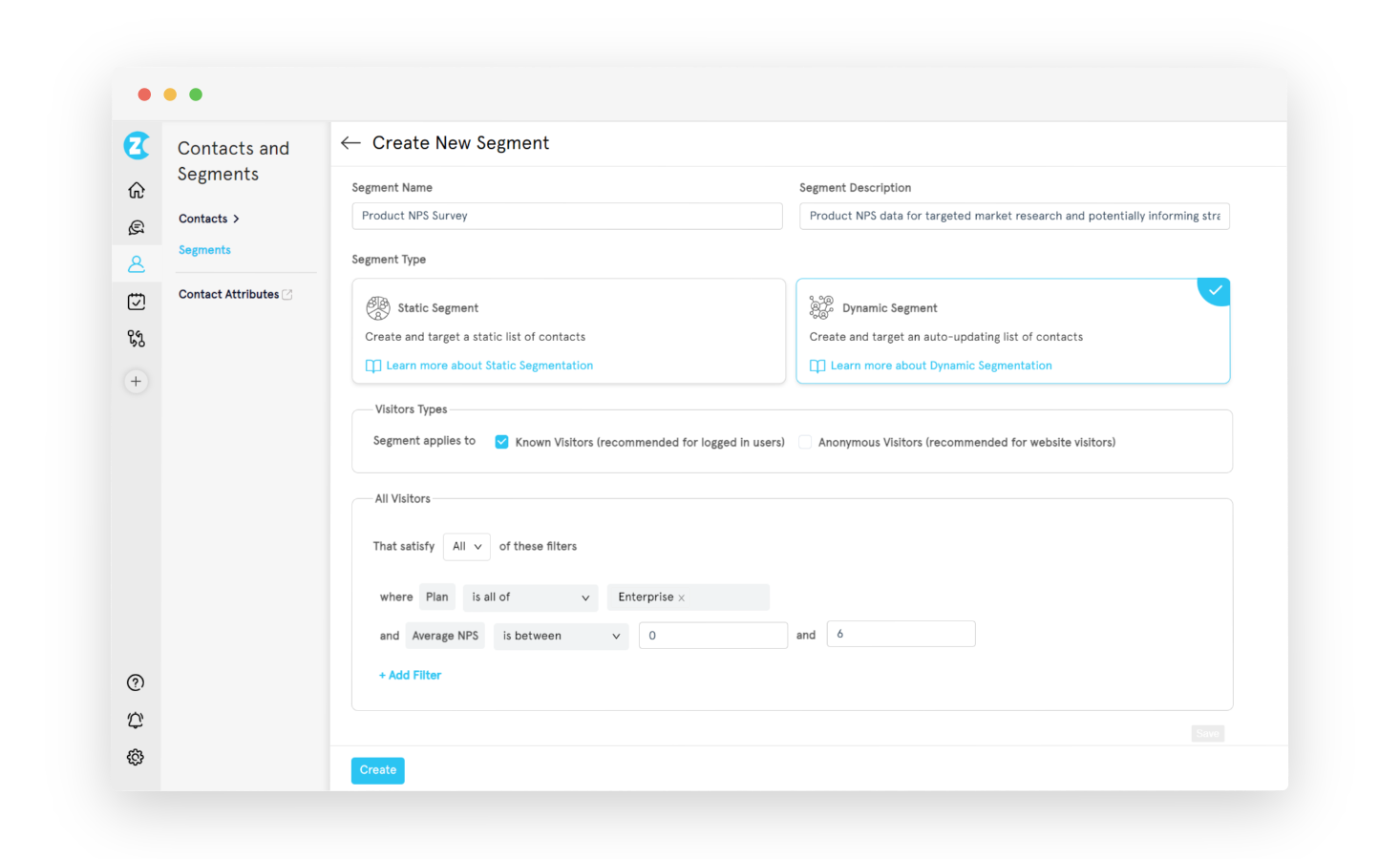
4. AI-Powered Insights & Sentiment Analysis
Zonka Feedback's sentiment analysis tool, powered by AI, can analyze open-ended comments to identify the emotional tone behind customer responses along with entity, intent, and urgency. This insight allows you to quickly pinpoint and address negative sentiments expressed by passive customers.
For instance, Zonka Feedback's sentiment analysis reveals that many passive customers are frustrated with the layout of certain stores in your retail chain. By understanding the specific entities involved (e.g., store sections) and the urgency of the complaints, you can prioritize redesigning these layouts to be more intuitive and easier to navigate.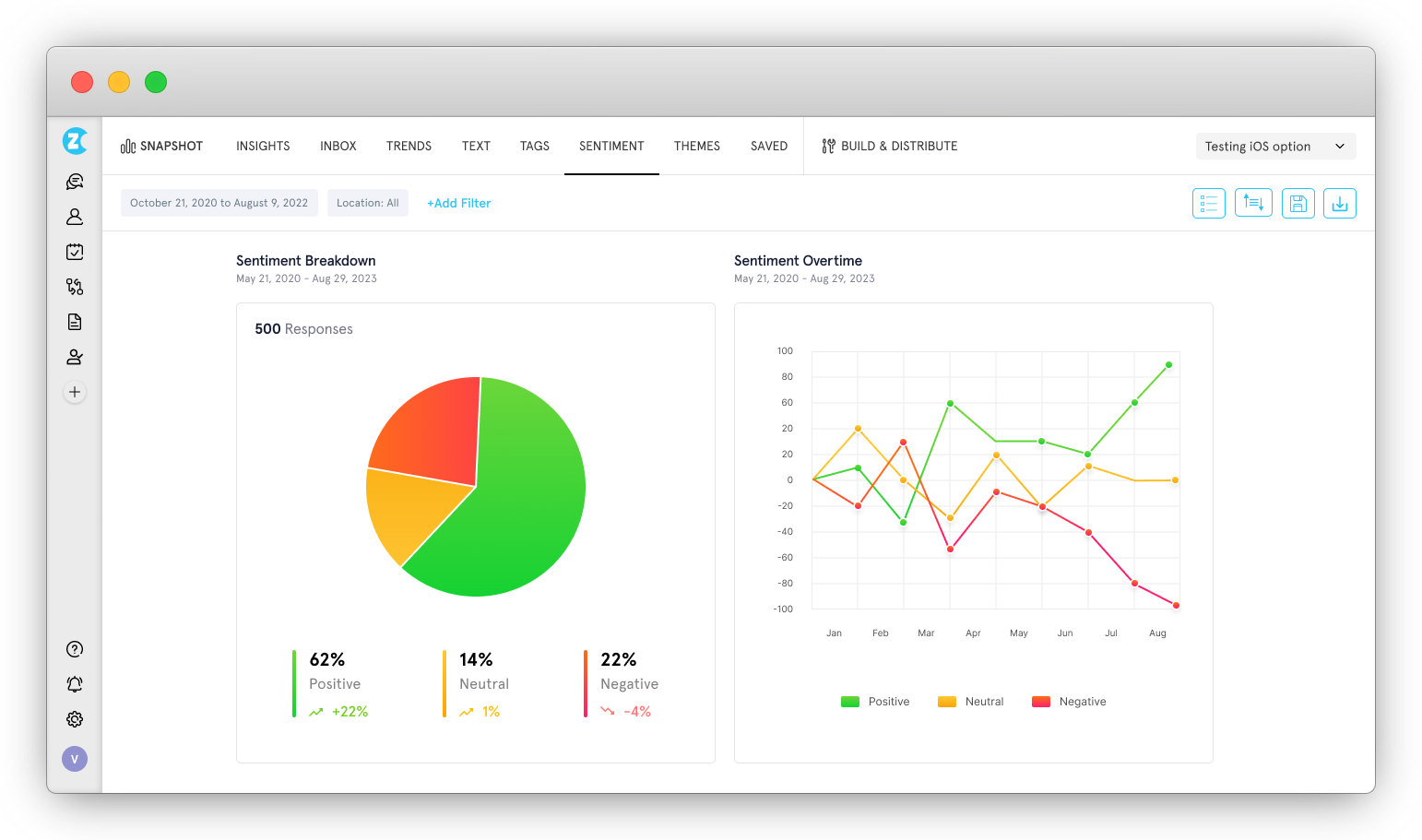
5. Advanced Analytics for Data-Driven Improvements
By using advanced analytics and reporting of Zonka Feedback, you can identify common themes and issues among passive customers. By understanding these patterns, you can make informed, data-driven decisions to measure customer satisfaction and improve loyalty.
For example, if you are analyzing feedback from multiple locations for your retail chain, Zonka Feedback's advanced analytics can reveal that Passive customers across multiple store locations frequently mention concerns with staff availability and the quality of assistance provided. With these insights, you can take specific, targeted actions like:
-
Increase Staff Availability: Use feedback data to identify peak times when customers feel understaffed. Adjust staffing schedules to ensure more employees are available during these busy periods, and consider hiring additional part-time staff to cover these times.
-
Improve Quality of Assistance: Analyze feedback to identify common areas where Passives feel the assistance provided was lacking. Implement targeted training programs for staff to improve their product knowledge and customer service skills. Introduce a mystery shopper program to regularly evaluate and improve service quality.
Once these improvements are implemented, Zonka Feedback’s reporting features allow you to track customer responses over time. Monitoring this data helps you assess the effectiveness of the changes and make further adjustments if necessary.
6. Smart Routing of NPS Feedback
The routing feature of Zonka Feedback enables you to direct feedback to the appropriate departments or individuals based on the nature of the comments. This ensures that specialized teams handle specific issues, allowing for more effective and timely resolutions.
Coming back to our retail example, feedback about long wait times at checkout is routed to the store operations team, while comments about locating products are sent to the merchandising team. This precise routing ensures that each issue is addressed by those best equipped to handle it, leading to quicker resolutions and improved customer experiences and satisfaction.
7. Closing the Feedback Loop for Demonstrating Impact
While NPS surveys are great for identifying Promoters and Detractors, Zonka Feedback goes beyond that, helping you convert Passives into Promoters by closing the feedback loop in a way that's specific to their needs. Here's how:
-
NPS Surveys with Personalized Prompts: Move beyond the standard Net Promoter Score question. Zonka Feedback allows you to personalize prompts specifically for passive customers. Ask open-ended questions like: "We noticed your recent NPS score was neutral. What could we have done better to make your experience a 9 or 10?" This encourages them to elaborate, revealing valuable details about their concerns.
-
AI Analysis to Uncover Hidden Gems: Zonka Feedback's AI goes deeper than simply analyzing sentiment. It analyzes open-ended comments to identify underlying themes. For example, a Passive customer might leave a neutral score but mention "limited product selection" in open-ended comments. AI analysis uncovers this hidden frustration, providing actionable insights.
-
Automated Workflows for Targeted Engagement: Once feedback is analyzed, Zonka Feedback's automated workflows trigger appropriate actions. For example, a workflow can be designed to send a personalized email offering a discount on a future purchase in exchange for more detailed feedback. Additionally, the workflow can tag relevant teams (e.g., customer service) based on AI-identified concerns.
-
Prioritize Actions Based on Impact: Not all Passive feedback carries the same weight. Zonka Feedback helps you prioritize. For instance, analyze the frequency of "limited product selection" comments across different locations. If it's a widespread issue, prioritize expanding product options.
-
Send Follow-Up Messages: A prompt response demonstrates you value their feedback and with Zonka Feedback, you can send automated follow-up messages within 24-48 hours. You can send a personalized email to the passive customer acknowledging their concern and outlining plans to expand product selections.
-
Track Reports in Real-Time to Observe Changes: Use Zonka Feedback's real-time reporting to see if your efforts are paying off. You can monitor the number of Passive responses mentioning "limited product selection" after implementing changes. This data helps you gauge the effectiveness of your actions and adapt your strategy for continuous improvement.
By personalizing the NPS experience for Passives, leveraging AI for deeper insights, and taking action through automated workflows, Zonka Feedback empowers you to close the feedback loop with Passives, ultimately converting them into loyal promoters.
Conclusion
By understanding the psychology of Passives and implementing the strategies outlined above, you can unlock a wealth of untapped potential within your customer base. Remember, even small improvements in NPS scores can translate to significant financial gains through increased customer retention and advocacy.
Don't let your existing customers become silent churners! Utilize online survey software like Zonka Feedback, which offers an actionable NPS program that allows you to not only create Net Promoter Score surveys but also enhances their effectiveness through multichannel distribution and advanced segmentation. It helps you close the feedback loop by allowing you to effectively analyze feedback responses through its advanced analytics, send automated responses through NPS automation, and take prompt action based on valuable insights offered by AI sentiment analysis.
Sign up for a 14-day free trial or schedule a demo with our team to transform Passives into loyal brand advocates, fueling sustainable growth for your business!

